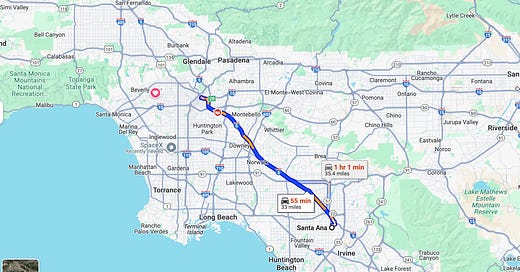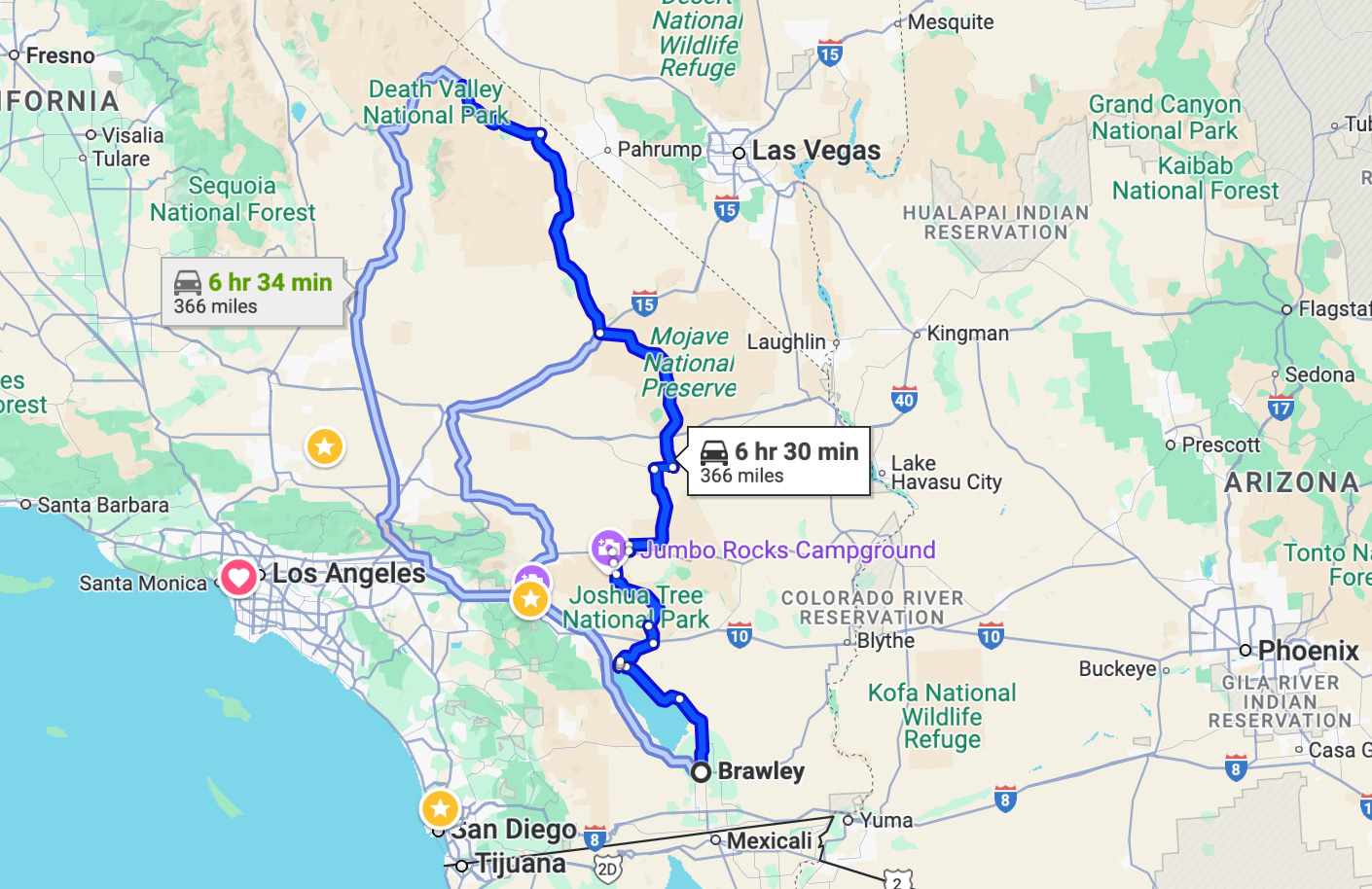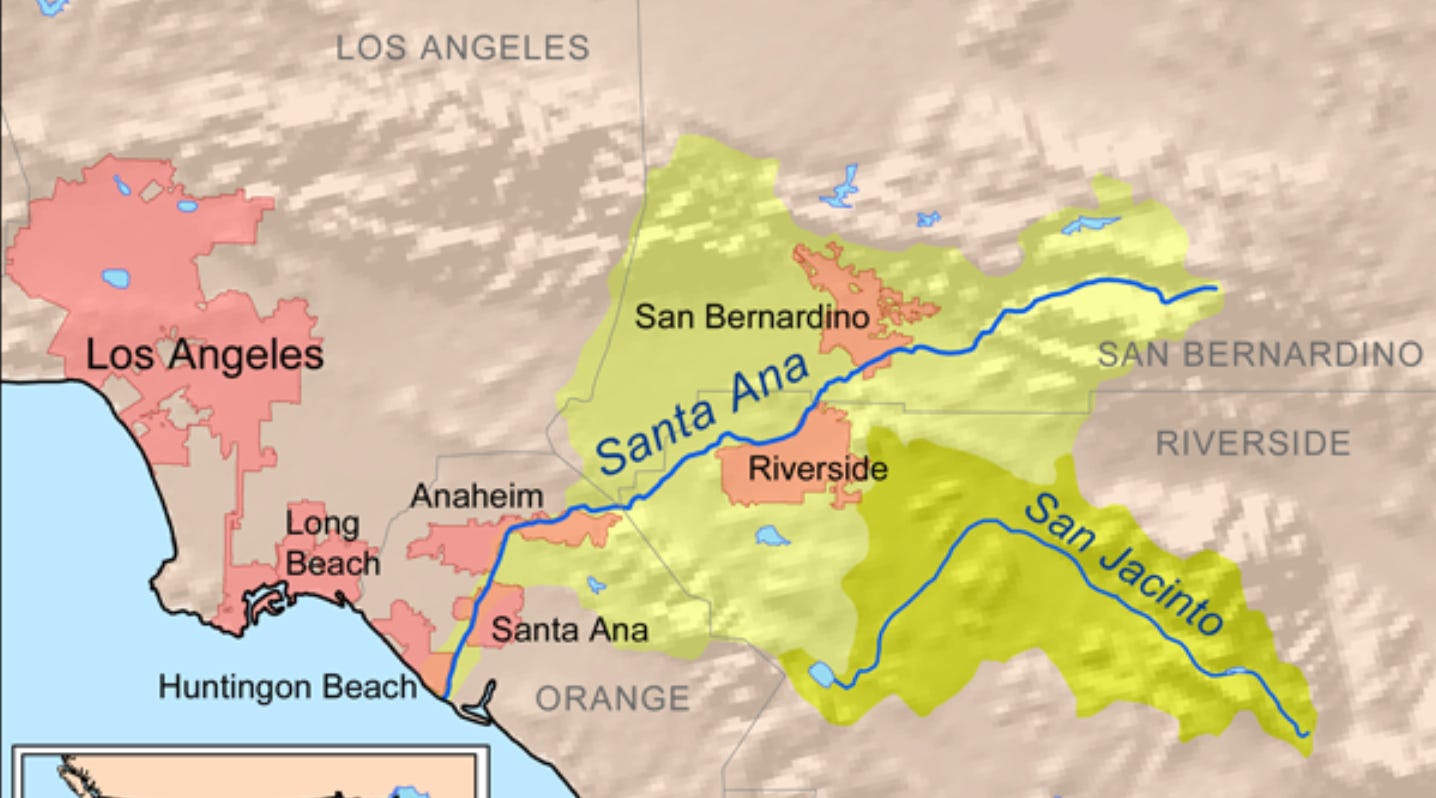Why don't Santa Ana winds blow from Santa Ana?
Winds are usually named after where they blow from, but not in the case of L.A.s' fire-driving Santa Ana winds. Hence, my proposal for more informative names.
Winds are generally named after where they blow from, but the most dangerous of Los Angeles’ notorious Santa Ana winds don’t blow from Santa Ana, which is southeast of Los Angeles. Instead, the hardest Santa Anas blow from the northeast, which is critical to know when wondering whether the fire north of means you should be packing up and getting ready to flee for your life.
Santa Ana is the first big (300k) independent municipality southeast of Los Angeles on the I5 Golden State freeway. Lots of people in Southern California have a sense that Santa Ana is southeast of Los Angeles, which implies that Santa Ana winds blow from the southeast and thus would tend to push fires northward rather than southward. That must give some people south of fires a false sense of security, which can be fatal when Santa Anas from the northeast are rapidly pushing fires southward.
Confusingly, the scariest winter Santa Ana winds, such as the ones that drove the Pacific Palisades and Altadena fires earlier this month southward and westward originate in the northeast, out in the direction of Death Valley and Las Vegas.
Los Angeles’ Santa Ana winds play a not insignificant role in 20th Century literature and song lyrics. Raymond Chandler, for example, famously wrote in Red Wind:
There was a desert wind blowing that night. It was one of those hot dry Santa Anas that come down through the mountain passes and curl your hair and make your nerves jump and your skin itch. On nights like that every booze party ends in a fight. Meek little wives feel the edge of the carving knife and study their husbands' necks. Anything can happen. You can even get a full glass of beer at a cocktail lounge.
I’d always thought that Los Angeles’ hot, dry Santa Ana winds are named that way because they blew from the direction of Santa Ana, which is southeast of Los Angeles (and presumably these warm winds come over the Santa Rosa mountains from the low, hot desert of the Coachella Valley further to the southeast). After all, that’s how you name winds: a north wind blows from the north, not toward the north, so a Santa Ana wind, I assumed, blows toward Los Angeles from Santa Ana.
I’d also assumed that the very dry but often cooler winds from the northeast that cause so many Southern California fires during dry winters, such as those of January 7, 2025, were a different set of winds than the Santa Anas, or a subset of the Santa Anas. I’d taken to calling them Death Valley winds for the dryest place in America northeast of Los Angeles. (Death Valley is intensely hot in summer, but in winter it’s cooler than the Palm Springs region southeast of Los Angeles.)
But everybody else just uses Santa Ana winds for all winds off the desert, northern or southern, even though most of them blow toward Santa Ana rather than from it.
One theory on the origin of the name is that the town of Santa Ana suffered a lot of wind storms in the late 19th Century. So the type of wind was labeled a “Santa Ana wind” by newspapers outside of Santa Ana, much to the disgust of Santa Ana real estate developers who disliked their town being associated with a destructive wind. Another theory is that Santa Ana winds tend to blow in roughly the same direction as the Santa Ana River flows southwestward toward the Pacific:
So Santa Ana is not where a Santa Ana wind blow from but blows to.
Got that?
My trying to draw a distinction between a Santa Ana wind blowing from the southeast toward the northwest and a Death Valley wind blowing from the northeast toward the southwest may sound pedantic.
But you just wait until there’s a big fire burning in the brush of one of the east-west Transverse ranges of Greater Los Angeles and suddenly the question of whether the wind is pushing the fire north or south, toward you or away from you, becomes full of interest.
Hence, it might be worthwhile to have more precise names for fire-driving winds to help people have a better sense of whether they ought to start packing up in case they have to evacuate.
Weather forecasters have been pretty entrepreneurial lately, coming up with popular neologisms like “atmospheric river” and “bomb cyclone.” So why not start using the ominous-sounding term “Death Valley wind” for the type of Santa Ana winds out of the northeast that contribute to so many fires?








Well, if no SA Winds, then Steely Dan would have to change the lyrics to "Babylon Sisters." And that would be very bad.
Growing up the Inland Empire, I was taught (probably on the playground) that they were called that because they came from the Santa Ana mountain range.
https://en.wikipedia.org/wiki/Santa_Ana_Mountains